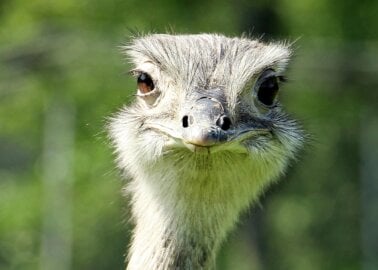Hard Facts About a Woolly Industry
Here’s the not-so-fluffy lowdown on wool – and some facts that you’re not likely to learn from the industry’s sales pitches.
About 30 million sheep are farmed in the UK, and they are sheared of approximately 22,000 tonnes of wool every single year. This may not sound out of the ordinary until you learn that a third of this wool is labelled as “skin wool”, a grim name for wool which is torn from slaughtered lambs’ bodies.
Wool, far from being green, is a by-product of an industry which slaughters more than 6 million lambs a year in the UK alone. In fact, modern synthetic textiles have longer lives than many of the animals who are imprisoned and slaughtered to create what is essentially a weave of sheep hair.
On top of these already alarming numbers, approximately 4 million sheep die every single year from exposure, sickness and injury as well as complications during birth because of poor conditions and genetic factors resulting from the way that they have been bred. The sheep who do survive to be “productive” end their too-short lives in the abattoir, sometimes while still conscious because the electrical stun guns that are used are often ineffective.

Around 25 per cent of the world’s wool comes from Australia, where a barbaric practice known as “mulesing” is widespread. Mulesing involves workers slicing huge chunks of skin off lambs’ legs and backs. It’s supposed to protect the mutilated sheep from flystrike, but it doesn’t really work – instead, this bloody procedure causes them intense pain and fear.

Shearing sheep is often a violent and terrifying process for the animals. Low-paid workers try to rush through as many of them as quickly as possible, handling them roughly and making careless – but for the sheep, agonising – mistakes. During shearing, sheep can sustain anything from nicks to complete amputations of their udders, ears, penises and other body parts.
After a few years, sheep farmed for wool are consigned to be slaughtered and face a further harrowing ordeal. These naturally timid and sensitive animals may be crammed onto trucks, sometimes forced into crowded pens to be auctioned or even made to endure a prolonged and hellish journey on a ship to an overseas slaughterhouse because of the cruel practice of live export – which is common in Australia and has recently been resumed in the UK, too.

The wool industry makes profits of roughly 1 billion pounds a year in the UK alone, making the lack of basic welfare for many of the animals it exploits all the more obscene. Why celebrate an industry which derives a third of its profits from slaughtering intelligent, social and caring animals before they have been alive for even a year?
Given that there are so many affordable, cosy and cruelty-free (not to mention hypoallergenic) fabrics available, such as acrylic and polyester fleece, it’s no wonder that compassionate people are choosing not to buy wool. Why not make this Wool Week the moment when you change your consumer habits and help sheep by pledging never to wear their hair:
Images 1 and 3: Jo-Anne McArthur / WeAnimals.org



